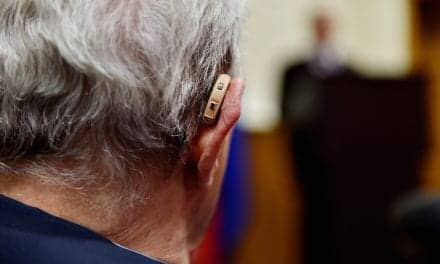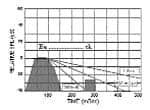In our July/August issue, we explore hearing protection in its many guises. The user’s criteria for choosing a particular type of protection may hinge on its level of comfort, the noise exposure, the individual’s ear canal size, physical factors, the temperature, and the environment. Our roundup reflects the views of the professionals we spoke with, and is not intended to be a scientific survey.
We asked manufacturers/distributors:
- What are your best-selling products?
- Why are those items selling versus your other offerings?
- Tell us about changes you envision down the road.
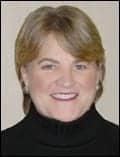
|
| Gail Gudmundsen, AuD |
GAIL GUDMUNDSEN, AUD
managing director, audiology products division
Etymotic Research Inc, Elk Grove Village, Ill
Etymotic Research is the manufacturer of attenuator buttons for Musicians Earplugs and ER-20 High-Fidelity Earplugs sold as ETYPlugs, BabyBlues, and other trade names. Recently released are an electronic blast protector and a personal noise dosimeter. All earphone, headset, and in-ear monitor products are noise-isolating by design. Foam earplugs muffle sound. Both Musicians Earplugs and ER-20s were designed to protect hearing while preserving the clarity and richness of speech and music.
The science behind flat attenuation includes replicating the response of the open ear and reducing sound evenly at all frequencies. Musicians Earplug buttons contain a diaphragm that functions as an acoustic compliance, while the volume of air in the sound bore of the custom earmold acts as an acoustic mass. The combination of the two produces a resonance at approximately 2,700 Hz—as in the normal ear—which results in a smooth, flat attenuation.
The technology in ER-20s combines a tuned resonator and acoustic resistor to replicate the natural response of the open ear and reduce sound evenly across frequencies by 20 dB. When high sound levels are reduced, ear overload distortion is reduced, making it possible to distinguish voices and music better than with no ear protection at all.
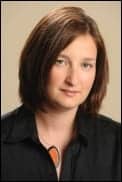
|
| Renee S. Bessette |
RENEE S. BESSETTE
marketing manager
Howard Leight/Sperian Hearing Protection LLC, San Diego
By far, single-use foam earplugs, such as Howard Leight’s Max and Laser Lite earplugs, are our best-selling hearing protectors and found very frequently throughout the industry. Single-use earplugs are popular because of their low cost, their ease of use, and—most important—their high level of comfort when worn in the ear canal for a full work shift.
Recently, we introduced Pilot, an innovative hybrid design that combines the performance and cost savings of multiple-use earplugs with the superior comfort of single-use polyurethane foam earplugs, to deliver long-wearing comfort and total control over fit. Pilot’s no-roll insertion delivers instant protection upon proper insertion and there is no wait for the fit to be complete.
With the EPA’s impending change to the Noise Reduction Rating (NRR) from a fixed number to a range of protection, many hearing conservation program managers will be faced with the question of “How much protection are my workers receiving from their earplugs?” This is a great opportunity to implement earplug fit testing for workers, with systems such as Howard Leight’s VeriPRO, to determine if they are receiving optimal protection for their noise environment.
Earplug fit testing provides an accurate, real-world picture of your employees’ hearing protection. It can help you find out whether your employees are receiving optimal protection, require additional training on how to fit their earplugs, or need to try a different model, all the while reinforcing HPD training on proper fit and usage on a one-on-one basis.
KARI HOCKS
marketing manager
Hocks Products, Portland, Ore
The Hocks Noise Braker filter is used worldwide by many manufacturers for a multitude of activities in which noise interferes with human productivity. Manufacturers of hearing protection prefer the Hocks Noise Braker filter because it reduces all sound to approximately speech level.
The filter converts sonic energy into thermal energy by means of compression acceleration; however, the change in temperature is so minute you will never notice it. This acoustic filter allows the wearer to hear and carry on a conversation at all times without having to remove or adjust the unit. Our filter is also used in several over-the-counter units.
Our Hocks Noise Braker Standard is a one-size-fits-most hearing protector in which the filter has been inserted into a mushroom-style ear tip. Filtered hearing protection, whether a custom or over-the-counter unit, allows the wearer to hear, making work environments safer. The filter has no mechanical parts to wear out or injure the ear. With the use of properly fit hearing protection, we could reduce noise-induced hearing loss to a minimum.

|
| Fred Ravetto |
FRED RAVETTO
vice president
Elvex Corp, Bethel, Conn
Our top-selling electronic earmuffs are the Elvex DeTune Electronic Communications muff, introduced earlier this year, and the Elvex Level Dependent muff.
Elvex DeTune improves communications in noisy environments and permits users to adjust the frequency range transmitted through the circuitry and speakers. Two control knobs filter out high and low frequencies independently of each other, and when they’re set in the neutral position, users hear the environment almost as if no hearing protector was worn—except for the maximum sound limiter. If impulse sounds—such as gunshots—occur, the muffs automatically activate an impact filter that closes in a few microseconds and reactivates in about 2 milliseconds.
The external audio jack facilitates the connection of radios and MP3 players. The electronics on the Level Dependent muff, which is nonfoldable, are tuned for impulse and continuous noise. The microphones on the outside of the muffs can amplify weak sounds, and the gain limiter suppresses sounds exceeding 82 dB. Frequencies below 400 Hz and above 4,000 Hz are not processed, so the speech-to-noise ratio can be improved in many continuous-noise environments.

|
| Jeffrey S. Birkner, PhD, CIH |
JEFFREY S. BIRKNER, PHD, CIH
vice president, technical services
Moldex-Metric Inc, Culver City, Calif
The best-selling hearing protection products at Moldex are our Pura-Fit and SparkPlugs earplugs. They both have the highest independently tested NRR available, 33 dB. Both plugs feature special, 100% PVC-free foam that is formulated for softness and comfort, and the outer surface is smooth, so it doesn’t irritate the ear canal.
Pura-Fit earplugs have a longer length for easy fitting and removal. The trademarked random color patterns of SparkPlugs help to increase worker acceptance and compliance. They are the top sellers because they have been in the Moldex hearing protection product line for the longest time and have a strong and loyal following among users. Some of our newer products, such as Meteors earplugs, are starting to catch up based on technological and design innovation and worker preference.
Meteors feature a unique undercut design affording a comfortable, secure fit all day long with less pressure on the smallest diameter of the ear canal. The future of hearing protection products will be driven by innovation to increase user compliance and acceptance based on convenience, comfort, and ease of use. Movement toward “greener” alternatives to raw materials, manufacturing processes, and packaging will continue to change the hearing protection product landscape.
We are leading the way with our PlugStation earplug dispensers, which give employers the opportunity to place earplugs in highly visible locations, and they eliminate the waste and mess of traditional packaging.
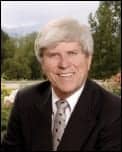
|
| Garry Gordon, MS |
GARRY GORDON, MS
audiologist, CEO
EAR Inc, Boulder, Colo
The best-selling are the custom-fit silicone earplugs, from our relationship with Insta-Mold. We can modify them to work with other devices while still providing protection. The high-grade, room temperature cure silicones are the most popular. However, the ones that are still requested—and we still do extremely well with—are our electronic series.
And now we just are being inundated with inquiries regarding our new patent-pending HearPlugz-DF, variable attenuator. As the noise level increases, so does the sound suppression. About 25 countries have already started placing orders. We’re focused on making this unique technology grow. It is different and new, and we’ve got testimonies from the military and law enforcement, and we’re starting to get them into large industrial accounts.
A lot of the things we do are under the umbrella of being called “specialized.” Many of them are custom-fit, which a lot of people like because of the variance, or differences in ears. They’re easy to use, they’re very functional, and they can be worn for long periods of time. There will probably be additional changes down the road with our product lines and services—but currently we have a strong focus on filtering and will soon be able to put them into our Insta-Molds.
We asked practitioners:
- What brand/type of hearing protection do you recommend to clients?
- What do you like about those products versus other types?
- Have you tried other types?
CATHERINE PALMER, PHD
director, Audiology and Hearing Aids
Department of Otolaryngology, University of Pittsburgh Medical Center
Just in terms of a little background, we started our Musicians’ Hearing Center in 2003. Although we have a strong focus on musicians across the age span, we also see individuals from a variety of work and recreational settings who need hearing protection as well. Because of that, we use a fairly large variety of products depending on the individual’s specific communication needs and hearing protection needs.
We find that many individuals need hearing protection and at the same time need to hear well. This has always been an issue for individuals in need of hearing protection, especially musicians. So for our musicians, we use Musicians Earplugs, either custom or noncustom.
We have a large program of hearing protection in the K-12 schools in the Pittsburgh area—Allegheny and surrounding counties—and we provide ER-20s to the schools for their instrumental program, band, and orchestra. The ER-20s are ideal for young musicians in the schools because they do the job—ie, protect hearing while allowing the musician to hear well—at an affordable price for the schools.
For this age group, there may be a high incidence of misplacing the hearing protection or moving on to other schools, so ER-20s are a terrific solution for schools that want to make sure their students are protecting their hearing while engaging in band and orchestra and while staying within their limited budgets.
THERESA JABALEY, MA, FAAA
audiologist and owner
Advanced Hearing Services, Chicago
Our favorite ear protection product for professional musicians as well as audience members is ER 9/15/25 custom Musicians Earplugs, and where cost is an issue, the noncustom ER 20s.
We feel very secure in what we promise with these earplugs, not just for the quality of music offered, but for the protection they provide. We like the flexibility of interchanging the levels of attenuation with a switch of a filter button, and conveniently, the users can make the switch for themselves. Westone Labs fabricates the custom products, and we have found that their attitude about musicians matches ours. That is, we are musician-friendly, we care that musicians have the best hearing protection, and we do whatever is necessary to have a comfortable, effective, and easy-to-use earplug.
We tell our musicians that once they have a good-fitting set of custom earplugs, they can play, practice, tour, and perform for 4 or 5 years before replacing the ER 15s. I have seen only one broken filter button in the past 15 years and hardly ever seen an earmold where the material split or crumbled. They might shrink or stain over time, but they hold up amazingly well under some pretty adverse conditions on the road or in small, dark clubs.
We offer musicians a comprehensive approach to their education and care so they know how they hear as a baseline and what we are trying to accomplish with ear protection to prolong or advance their careers. We have photos of musicians from the Chicago Symphony Orchestra—Orchestra Hall is three blocks from our office—in our waiting room and find that our rock musicians are often surprised that classical musicians are at risk for damage, so in that way, education starts right there.
CSO musicians have become some of our best users when it comes to protecting their hearing. They might use the 9 dB filter in Orchestra Hall where they are on risers or have a plexishield, but when they have a guest conductor or in the summer, when they play the outdoor venue at Ravinia, they switch to 15 dB filters because the stage is smaller and the sound on stage is louder. We have tried various labs and materials and are pleased with the Otoblast material from Westone, the color choices, the comfort, and the durability of the final product.

|
| Laurie Wells, AuD, CPS/A |
LAURIE WELLS, AUD, CPS/A
Associates in Acoustics Inc (AIA)
Loveland, Colo
The most important factor is to find a hearing protection device that the person will wear correctly and consistently. There are likely many different options that will provide good protection, but people always find a favorite, so any recommendations are based on preference of the individual, as well as other factors, including the noise exposure, the activity the person is doing, and the environment the person is working or playing in.
Regarding attenuation, it is important to realize that there is a significant difference between the Noise Reduction Rating (NRR), which is a laboratory rating, and the “real-world” performance of any product. So, unfortunately, one cannot depend on the NRR to select which product is “best” for each individual. Some basic generalizations are that earmuffs tend to be easier to fit than earplugs. Intuitively, people know how to put on earmuffs without a lot of training, so most people can usually get good protection.
Earplugs can be advantageous because they are lightweight, easily portable, etc. Formable types of devices—like a foam product—tend to provide the most protection if they’re worn correctly. But they also require the most effort to insert them. You must roll them down into a tiny cylinder and insert them properly in the ear canals to get maximum benefit. Once they’re inserted correctly, they tend to give the highest attenuation ratings as a category of hearing protection.
A flanged type of earplug often can be more quickly inserted into the ear. However, what goes in easily often comes out easily, so you have to teach the users to reposition the plugs as often as needed to maintain that acoustic seal. A “canal-cap” type of device is a combination of an earplug and an earmuff. This type is suitable for short-term exposures or in situations where the user has to quickly put on or take off the hearing protector. They have lower attenuation ratings and tend to be somewhat compromising in comfort for some employees.
Finally, a word about custom hearing protectors: the custom hearing protection products can be very helpful for special situations such as coupling to a listening device, providing flat attenuation for special listening needs, etc. But remember, the most critical issue is finding a product that the worker or listener is going to wear and want to use.
The good news is that there are a lot of great products available to choose from, so keep trying to find an ideal solution for each person.
Judy O’Rourke is associate editor for Hearing Review Products. She can be reached at [email protected].



